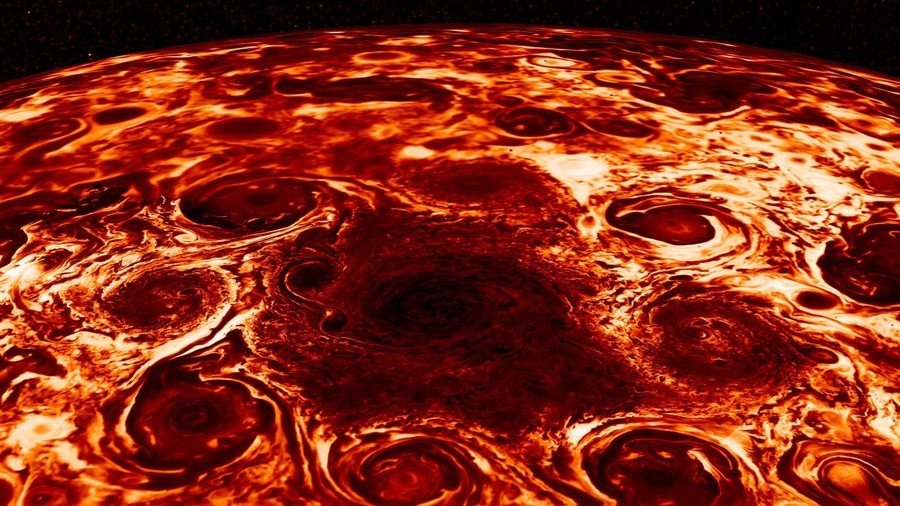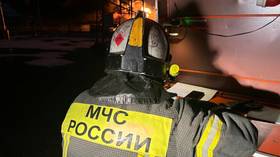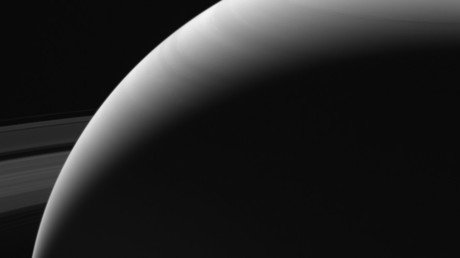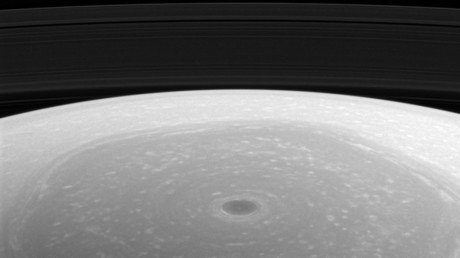Pizza planet? NASA’s striking new Jupiter images detail gas planet cyclones (PHOTOS, VIDEO)

The cyclone-infested upper atmosphere of our solar system’s biggest planet has been unveiled in intricate detail, with striking new images from NASA's Juno probe. Mission data shows Jupiter’s storms run far deeper than thought.
While Jupiter’s upper atmosphere has been extensively studied already, what lies beneath has been shrouded in mystery – and a lot of gas – until now. This atmospheric layer is characterized by distinctive colored bands, referred to as zones or belts, which move in different directions.
Scientists have long wondered how deep these belts run, and what drives their movements. These latest findings, due to be published in the science journal Nature this week, show that the bands extend far deeper into the planet than previously thought. They also reveal that the strange bands are related to jet streams which extend some 3,000 km down below the gas giant’s surface.
This atmospheric layer contains a whopping one percent of Jupiter’s overall mass. For comparison, Earth’s atmosphere contains less than one millionth of our planet’s mass.
“Galileo viewed the stripes on Jupiter more than 400 years ago,” lead author of the paper on Jupiter’s deep weather layer, Yohai Kaspi, said. “Until now, we only had a superficial understanding of them and have been able to relate these stripes to cloud features along Jupiter’s jets. Now, following the Juno gravity measurements, we know how deep the jets extend and what their structure is beneath the visible clouds. It’s like going from a 2D picture to a 3D version in high definition.”
Juno also snapped some awe-inspiring images of the massive cyclones that rage at Jupiter’s poles. These, according to NASA, are “enduring atmospheric features and unlike anything else encountered in our solar system.”

What lies at the center of Jupiter is also a mystery and these new findings suggest that, below the extremely dense weather layer, the gas planet rotates as a near-rigid body.
“This is really an amazing result, and future measurements by Juno will help us understand how the transition works between the weather layer and the rigid body below,” said lead author of the paper on Jupiter’s deep interior, Tristan Guillot.
NASA's Juno beamed back mesmerizing images of #Jupiter (PHOTOS) https://t.co/UPBPc99sOEpic.twitter.com/hN1S7TTEr5
— RT (@RT_com) December 2, 2017
Juno launched on August 5, 2011, and spent five years travelling to its destination. The pioneering spacecraft is only about one third through its mission to study Jupiter and to date has completed 10 science passes over the gas giant. The next is scheduled for April 1.
If you like this story, share it with a friend!














